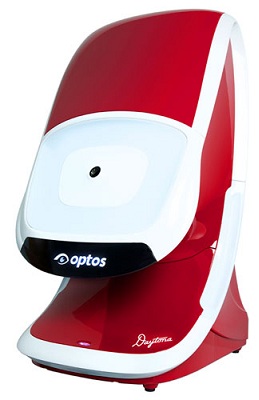With over 75 research papers discussing Optos’ ultra-widefield (UWF™) retinal imaging available at this year’s Association for Research in Vision and Ophthalmology (ARVO) meeting, it’s safe to say that the world of research is taking notice of UWF technology.
 A recent article by Rishi P. Singh, MD, an Assistant Professor of Ophthalmology at Case Western Reserve University, as well as staff physician and medical director of the clinical systems office in Cleveland Clinic, states “It is evident that UWF technology will take a more prominent role in the clinical care of patients with retinal disease.”
A recent article by Rishi P. Singh, MD, an Assistant Professor of Ophthalmology at Case Western Reserve University, as well as staff physician and medical director of the clinical systems office in Cleveland Clinic, states “It is evident that UWF technology will take a more prominent role in the clinical care of patients with retinal disease.”
According to Dr. Singh, Optos provides the widest view of the retina and its periphery at 200 degrees or 82 percent. UWF is rapidly accelerating the understanding of retinal diseases and impacting their management. Considering the aging population and associated influx of retinal and macular pathologies that occur with age, UWF and the ability to incorporate images into digital patient records will become an integral portion of your practice in the future.
The research conducted to date proves that optomap® images can be obtained faster and with no patient interference, which vastly improves the assessment time per patient. While efficiency alone is a benefit, accuracy of the imaging and the ability to assess and detect diseases sooner is also shifting the eye care industry for the better.
The Cleveland Clinic, in conjunction with Dr. Singh, will be conducting a six-month screening study comparing the field of view seen with the Optos Daytona ultra-widefield retinal imaging display technology to that captured with standard fundus photography. Optos ultra-widefield retinal imaging technology is rapidly expanding its reach as doctors and researchers realize the value of these images and the ease with which they’re added to patient records.
We invite you to contact us to learn how partnering with us can bring your practice seamlessly into the future of eye care.
Image Source: East Valley Eye Center